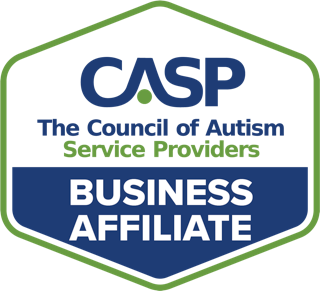Is your practice ready to meet the needs of a growing, diversifying population of children and families with autism? As you look ahead, remember that staff diversity is critical to serving your clients better.
Autism Demographics
Autism is becoming increasingly widespread in the U.S. Nearly 2.8% of children (1 in 36) have been diagnosed with ASD, according to the CDC’s Autism and Developmental Disabilities Monitoring (ADDM) Network. That figure is roughly 317% higher than estimates from 2000. It’s no wonder that so many ABA practices feel stretched thin.
There’s also more to consider when you examine the data. Data show that autism is 1.8 times higher among Hispanic children and 1.6 times higher among non-Hispanic Black children. But historically, White children have been 19% and 65% more likely to receive a diagnosis of ASD than Black and Latinx children (Autism Spectrum Disorder Among US Children (2002–2010): Socioeconomic, Racial, and Ethnic Disparities). In addition, over half of autistic children live in low-income households, and one in four lives in poverty, rates which are higher than for children overall, per UCLA Health.
Why Diversity?
Given these numbers, the question is how can your practice connect with children and families who may come from differing backgrounds? Can your staff build a strong rapport with them?
Part of the answer is staff diversity. It can be influential in meeting the needs of all families in your community. A diverse workforce can enhance your ability to provide culturally responsive care, which is essential for meeting the needs of a diverse client base. It might even be as simple as communicating better with multi-lingual families or those who don’t speak English.
A recent study, Cultural Diversity and Mental Health: Considerations for Policy and Practice, shows that engaging across cultures can help you achieve the following:
- Improved client outcomes
- Higher client satisfaction rates
- Better adherence to treatment recommendations
The logic is simple. When children, families, and caregivers feel culturally understood, they tend to develop higher trust relationships with clinical staff. Research bears that logic out. UNC’s Child Development Institute has found that a diverse representation of race and ethnicity among team members helps practitioners develop greater cultural humility and sensitivity in autism research and interventions.
What Is Diversity?
When discussing a diverse workforce, we mean a team from multiple cultural and economic backgrounds. Your team may identify with many different groups. Keep in mind that diversity goes beyond race and gender. It includes many aspects that shape people’s unique identities, such as:
- Culture
- Age
- Sexual Orientation
- Ethnicity
- Religion
- Neurodiversity
- And more
These aspects often intersect with people’s experiences in their families and communities, creating a unique and complex identity for each individual.
How to Foster Diversity
To foster diversity, your practice should consider inclusiveness at every level, from policies and culture to hiring to professional development and promotions.
Creating this environment starts with reviewing and updating your policies. People want to feel safe. Make sure to provide continuing diversity training and education for all staff and encourage transparent, two-way communication about diversity issues.
In addition, you can be intentional and strategic about recruiting for open roles. The concept applies to both clinical and administrative staff. If you’re not sure where to start, consider tactics like:
- Partnering with professional organizations that champion employees from historically marginalized groups
- Advertising in publications that reach communities with racial and ethnic diversity
- Building relationships with Historically Black Colleges and Universities (HBCUs)
- Attending career fairs that serve underrepresented communities
Once you hire new team members, you can also create clear pathways for career advancement to retain talent.
- Show your commitment to every employee’s long-term success with benefits such as tuition reimbursement for continuing education.
- Help staff grow their careers with opportunities to take on leadership roles. When your team members believe there’s a “glass ceiling,” they’re more likely to look for new opportunities somewhere else.
- Build mentorship into your culture to provide guidance and support for new hires. In some cases, people from systematically marginalized communities haven’t had the same access to informal mentorship as others.
While these best practices apply to all staff, they can also be valuable approaches for “walking the talk” regarding equity.
Use Data to Your Advantage
Like any ABA intervention, your diversity initiatives should be data-driven. Digital platforms and software solutions can be instrumental in managing and fostering diversity and inclusion within an ABA practice.
Here are some key data points to consider:
- Workforce demographics
- Recruitment and retention rates
- Employee satisfaction and engagement
- Patient demographics and outcomes
Use this data to refine your strategies, identify gaps, take action, and ensure you’re making meaningful progress toward your diversity goals while providing the best possible care for all the children and families you serve.
Learn More About Diversity in the Field of Behavior Analysis
By focusing on diversity—and using digital tools to drive and measure it—you can create a more inclusive and effective ABA practice. Ultimately, a rich, vibrant workplace can better serve your clients and community.
You can learn more by watching “Behavior Analysis and Diversity: Expanding our Workforce,” where Dr. Bridget Taylor, founder and CEO of Alpine Learning Group and Rethink BH’s Senior Clinical Advisor, and Kristen Koba-Burdt, a Certified Diversity Professional, discuss developments in diversity in behavior analysis.









